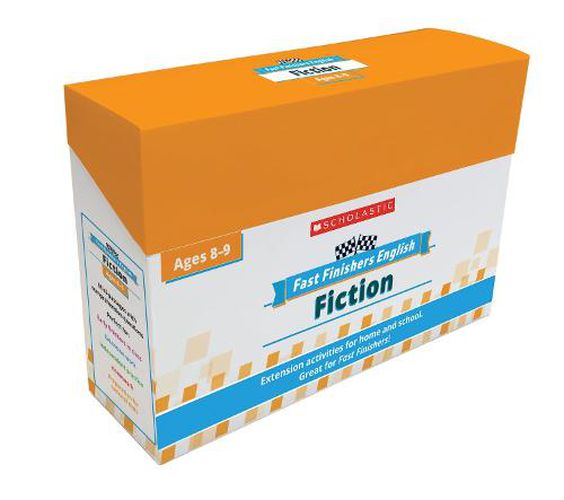Readings Newsletter
Become a Readings Member to make your shopping experience even easier.
Sign in or sign up for free!
You’re not far away from qualifying for FREE standard shipping within Australia
You’ve qualified for FREE standard shipping within Australia
The cart is loading…






This box of comprehension cards covers:
High-interest short passages of text along with five comprehension questions that prompt students to identify and effectively cite text evidence A variety of genres Comprehension-helper cards that provide kid-friendly definitions, tips, and examples to help students master reading skills
On each of the 100 text cards there is a passage
of age-appropriate text with an illustration and five comprehension
questions related to the passage. The 10 different
questions types in this fiction box are:
Cause and Effect - Questions focused on an event or action that makes something happen in a story and the result or consequence of that event or action. Character - Questions focused on the characters of a story
Conflict and Resolution - Questions focused on the main problem
of a story and the solution to, or outcome of, the problem or
conflict. Not all resolutions are happy ones.
Figurative Language - Questions focused on words and phrases that mean something different from what the words actually say. Inference - Drawing a conclusion about a story based on clues in the text and your own background knowledge. Prediction - Using what you know from the text to make a sensible guess about what will happen later on in a story. Setting - Questions focused on the settings of a story. Text Evidence - Questions focused on exact words, phrases or sentences in a text that provide information, answer a question or support a claim. Theme - Questions focused on the big idea or message of a story. A theme is conveyed by title, setting and symbols. It can also be conveyed by how its characters act, learn and change. Vocabulary - Hints that readers use to work out the meaning of an unknown word in a text. Context clues can come before or after the unknown word.
The fifth question on each card will be a S-T-R-E-T-C-H question, a creative thinking question such as writing sentences using words/phrases from the story, describing something from the story, explaining what might happen next, describing a real-life event that's connected to the story, asking an opinion on the story or character from the story.
Age-appropriate helper cards provide background information to help children respond knowledgeably to the comprehension questions. There are 10 helper cards in this box covering:
Cause and Effect Character Conflict and Resolution Context Clues Figurative Language Inference Prediction Setting Text Evidence
Theme
Also includes a Teacher's Booklet to provide ideas on how to use the cards and answers.
$9.00 standard shipping within Australia
FREE standard shipping within Australia for orders over $100.00
Express & International shipping calculated at checkout
This box of comprehension cards covers:
High-interest short passages of text along with five comprehension questions that prompt students to identify and effectively cite text evidence A variety of genres Comprehension-helper cards that provide kid-friendly definitions, tips, and examples to help students master reading skills
On each of the 100 text cards there is a passage
of age-appropriate text with an illustration and five comprehension
questions related to the passage. The 10 different
questions types in this fiction box are:
Cause and Effect - Questions focused on an event or action that makes something happen in a story and the result or consequence of that event or action. Character - Questions focused on the characters of a story
Conflict and Resolution - Questions focused on the main problem
of a story and the solution to, or outcome of, the problem or
conflict. Not all resolutions are happy ones.
Figurative Language - Questions focused on words and phrases that mean something different from what the words actually say. Inference - Drawing a conclusion about a story based on clues in the text and your own background knowledge. Prediction - Using what you know from the text to make a sensible guess about what will happen later on in a story. Setting - Questions focused on the settings of a story. Text Evidence - Questions focused on exact words, phrases or sentences in a text that provide information, answer a question or support a claim. Theme - Questions focused on the big idea or message of a story. A theme is conveyed by title, setting and symbols. It can also be conveyed by how its characters act, learn and change. Vocabulary - Hints that readers use to work out the meaning of an unknown word in a text. Context clues can come before or after the unknown word.
The fifth question on each card will be a S-T-R-E-T-C-H question, a creative thinking question such as writing sentences using words/phrases from the story, describing something from the story, explaining what might happen next, describing a real-life event that's connected to the story, asking an opinion on the story or character from the story.
Age-appropriate helper cards provide background information to help children respond knowledgeably to the comprehension questions. There are 10 helper cards in this box covering:
Cause and Effect Character Conflict and Resolution Context Clues Figurative Language Inference Prediction Setting Text Evidence
Theme
Also includes a Teacher's Booklet to provide ideas on how to use the cards and answers.